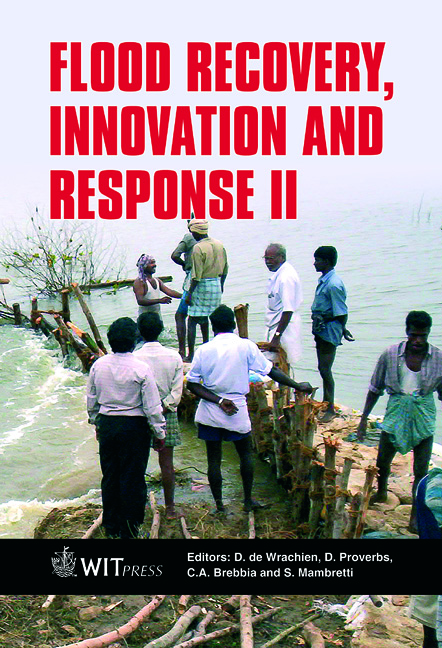Mathematical Models In Flood Management: Overview And Challenges
Price
Free (open access)
Transaction
Volume
133
Pages
12
Page Range
61 - 72
Published
2010
Size
1,451 kb
Paper DOI
10.2495/FRIAR100061
Copyright
WIT Press
Author(s)
D. De Wrachien, S. Mambretti & A. Sole
Abstract
One-third of the annual natural disasters and economic losses, and more than half of the respective victims are flood related. These hazards are likely to become more frequent and more relevant in the future, due to the effects of increase in population, urbanization, land subsidence and the impacts of climate change. Knowledge and advanced scientific tools play a role of paramount importance in the strain of coping with flooding problems. In this context, flood modelling represents the basis for effective flood mitigation. The modelling approach aims to provide the best means for assessing and, subsequently, reducing the vulnerability of rural and urban flood prone areas. By using models, an attempt is made to replace trial and error based strategies, as practised in the past, with more physically-based measures of flood management and control. Mathematical models are the best tools, nowadays available, for the design of efficient flood protection strategies and excellent supporters of decision-makers. With reference to these issues, the paper provides a review and a general description of the main features of the models currently used in flood management along with the characteristics of the experimental data required for models’ calibration. Moreover, to highlight the effectiveness and the resilience of these tools, some case studies of flood mitigation and hazard assessment are presented. Keywords: flood modelling, flood frequency analysis, deterministic models, flood studies worldwide.
Keywords
flood modelling, flood frequency analysis, deterministic models, flood studies worldwide





